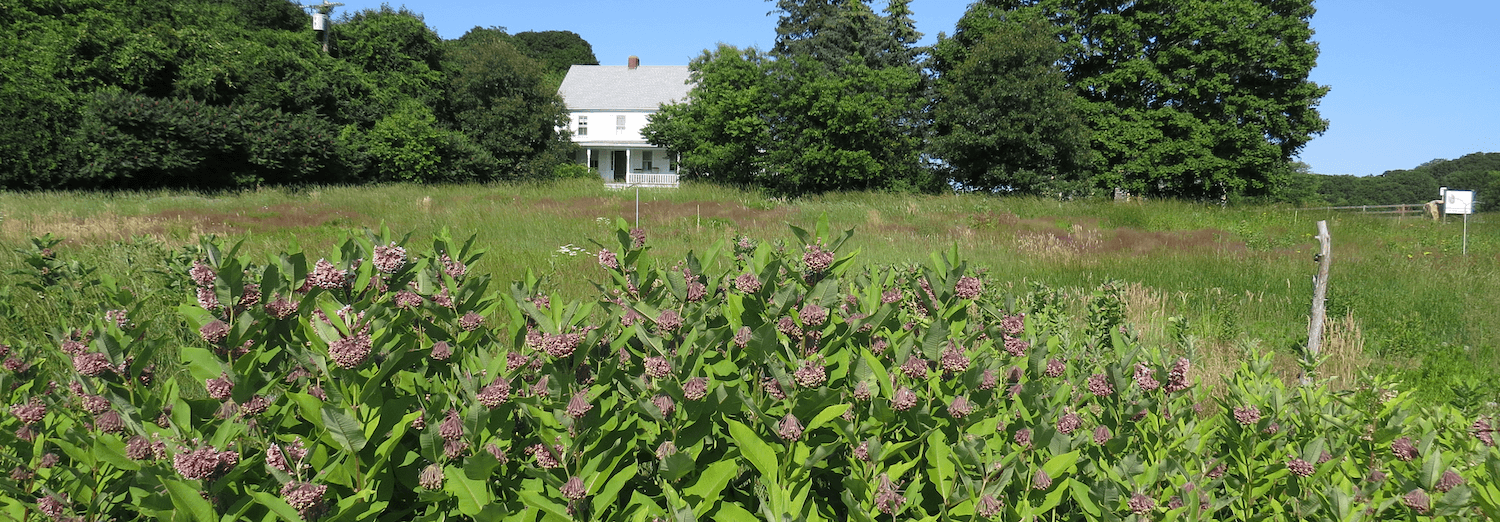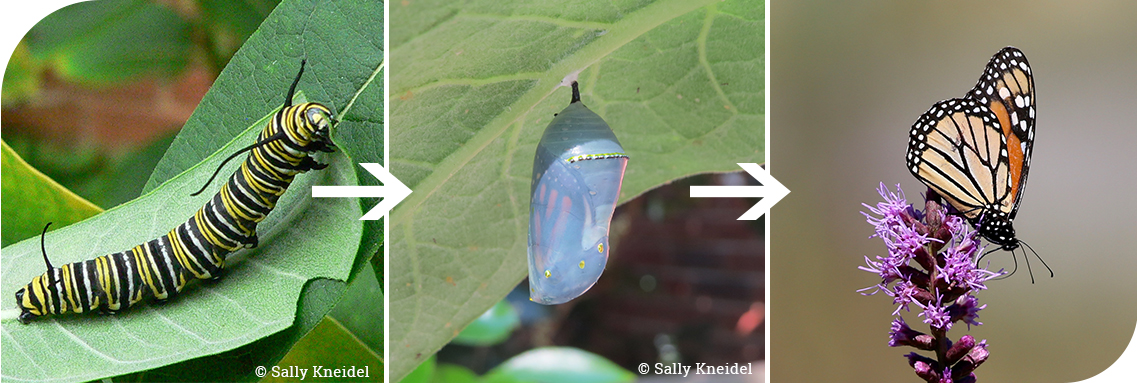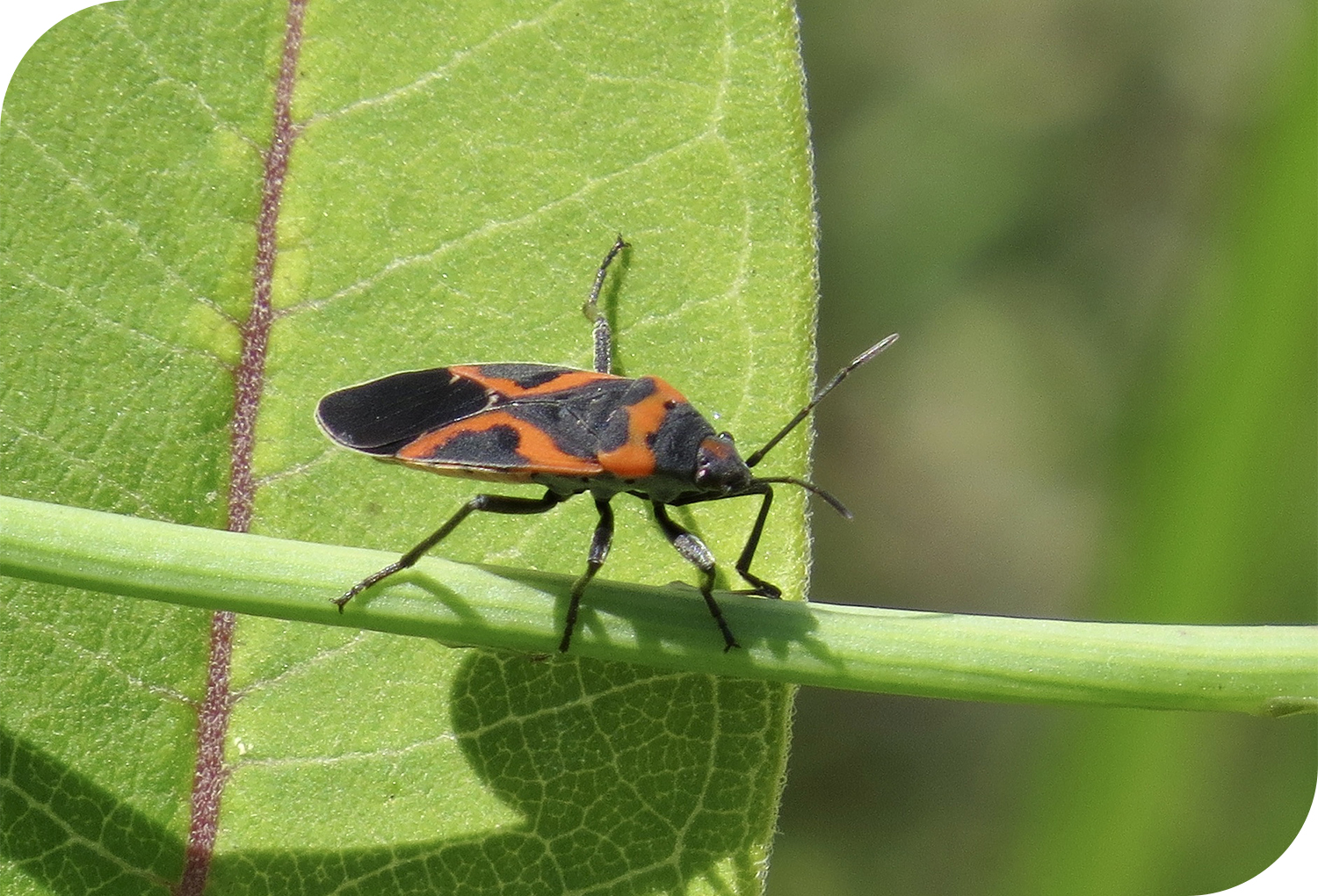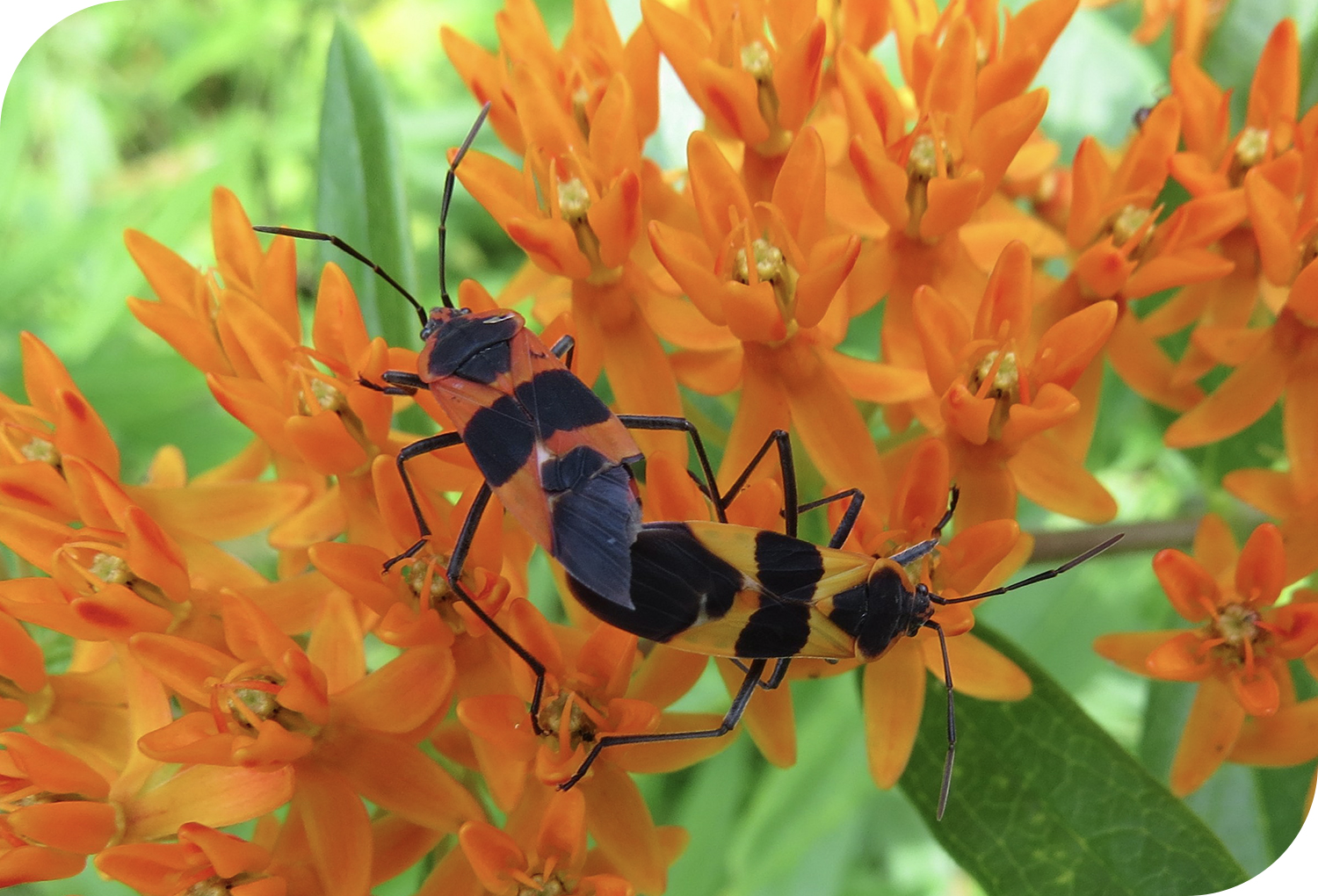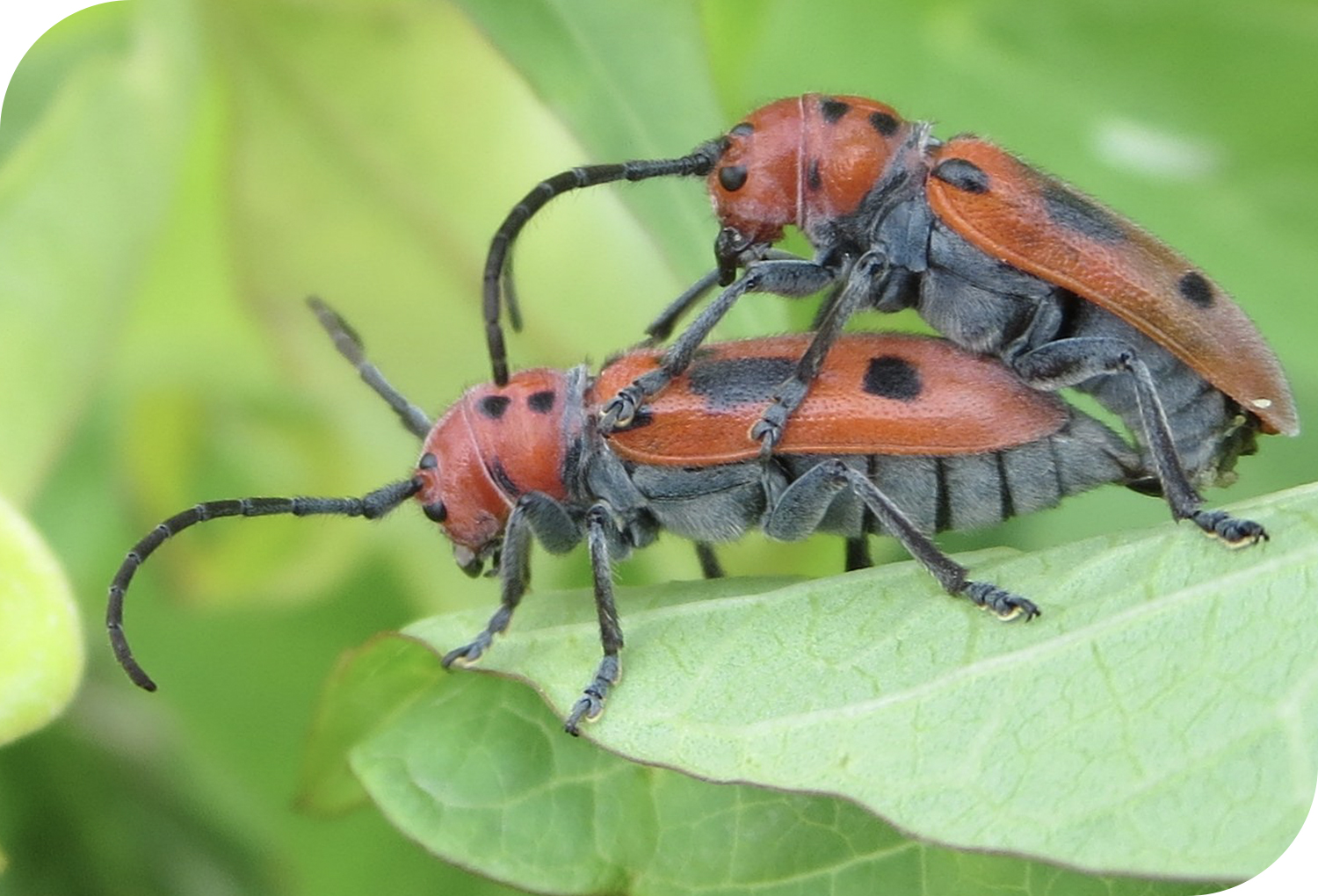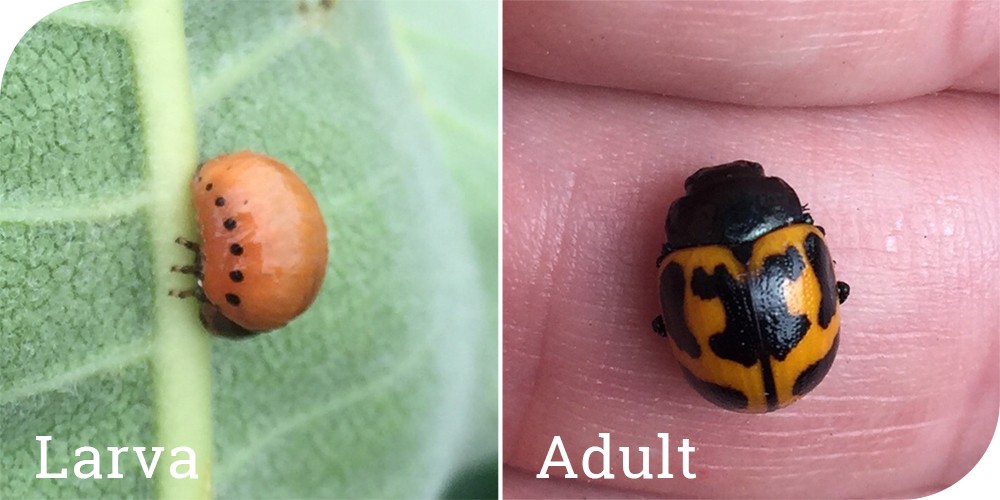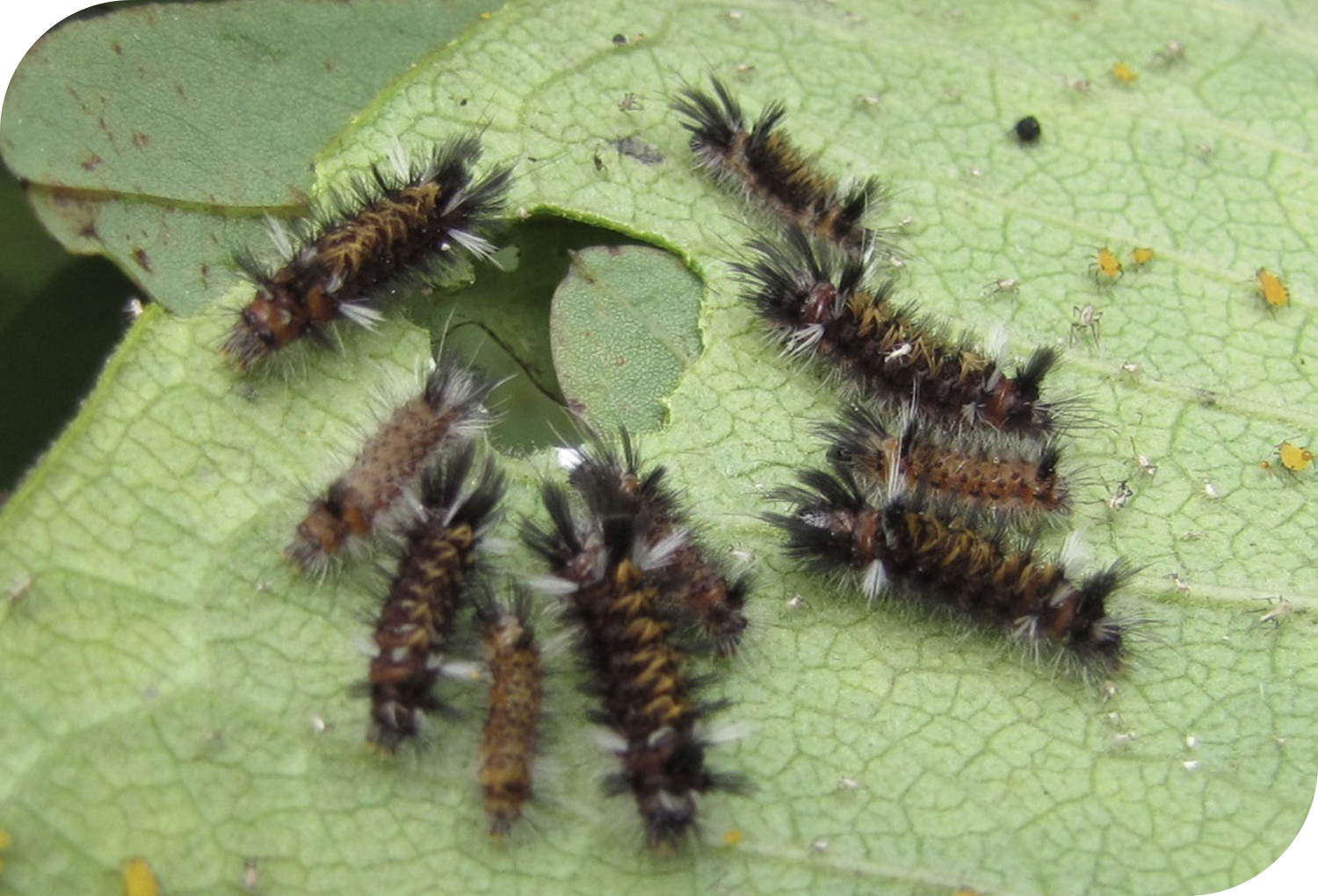Manomet’s coastal forest, fallow fields, and lush gardens play host to an abundance of living things. In mid-summer, milkweeds and their insect community make for one of the most interesting and easily accessible systems on full display.
There are over 200 species of milkweed throughout the world, and we have three species growing here locally. The towering, purple-flowered Common Milkweed (Asclepias syriaca) grows abundantly throughout sunny sections of the Holmes Farm, with the largest patch being easily seen in front of the farmhouse. Meanwhile, tucked in various corners of our Garden for Wildlife, the slender-leaved Swamp Milkweed (Asclepias incarnata) and vivid orange Butterfly Milkweed (Asclepias tuberosa) can be found.
Milkweed is best known for its relationship with the highly-migratory Monarch butterfly. The Monarch caterpillars rely on the milkweed plant as their only food source, and in turn, the adult Monarchs feed on the nectar of the flowers and help pollinate the plant. Fascinatingly, as the caterpillars feed on the milkweed, they sequester toxins from the plant, making themselves toxic to potential predators. This trait is carried through into the adult butterfly stage, and the butterfly’s bright colors function as a warning for its toxicity.





 Back to all
Back to all